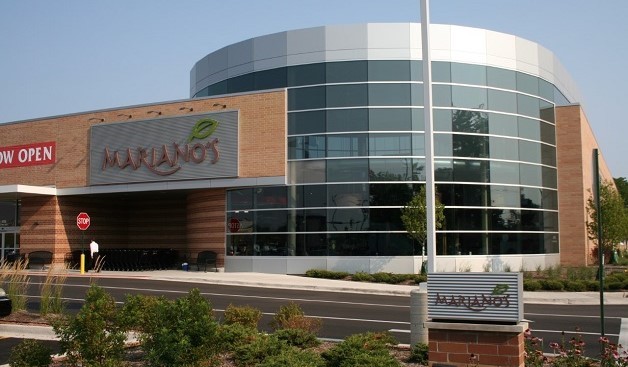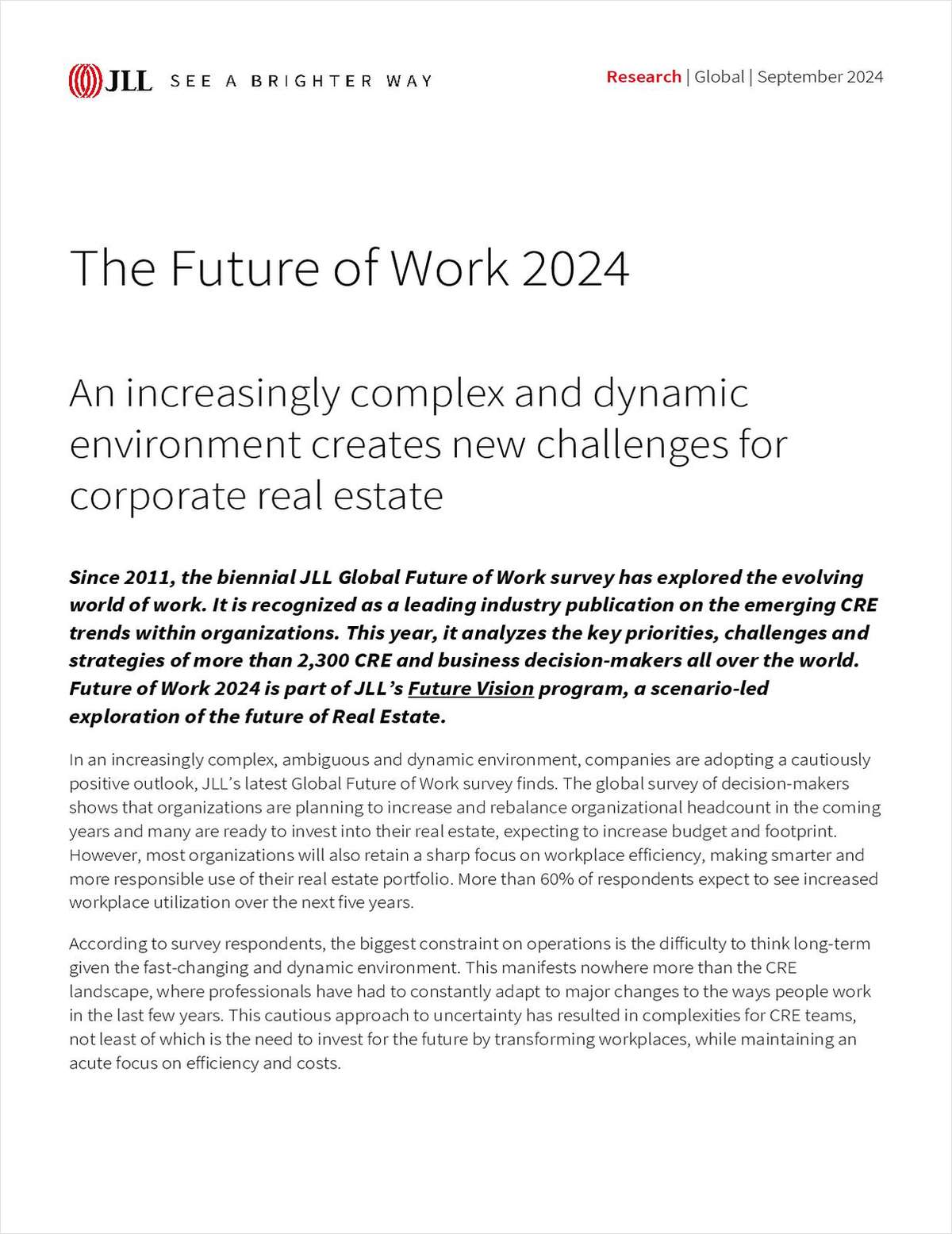 CHICAGO—Investors have found net lease properties quite attractive during the past two or three years, but the amount of money flowing into the sector declined significantly in the first six months of 2016. That was the conclusion of researchers from JLL , who just issued an investment outlook report on the subject. Using data from Real Capital Analytics and CoStar on transactions larger than $5 million, they found that investors purchased $18.8 billion of net lease assets by mid-year 2016, a 36.8% decline from the same period in 2015. However, this decline seems like a return to normalcy after several years with extraordinarily high levels of activity. The office market has led the way so far in 2016, with $8.6 billion in sales, followed by industrial properties at $5.6 billion, with retail in third at $4.5 billion. “Overall, the decline is representative of this year following a peak year in 2015 where portfolio and large sale leaseback volumes were quite high,” Sarah Henry , JLL's senior research analyst, net lease, told GlobeSt.com. “ I do believe that the remainder of 2016 will continue to normalize relative to the average sales volumes of 2013 and 2014, but the current visible pipeline of portfolios and large sale leasebacks indicate that the full year volume will continue to be below 2015 volumes.” Other changes are also taking place in the net lease sector. The popularity of net lease properties has sent investors looking for deals outside the nation's primary markets, softening cap rates in those metro areas, while slightly compressing rates in secondary and tertiary markets, JLL found. The softening has been most notable in the office sector, with rates increasing to 6.5% and 6.9% in the primary and secondary markets, respectively, a year-over-year bump of 75 bps. At the same time, cap rates for offices in tertiary markets fell to 6.8%, a decline of 34 bps. About half of all tertiary office transactions were sale leasebacks with at least ten years remaining in the lease term, a sign that these investors are looking to generate greater yields by concentrating on properties with higher-quality leases. The industrial sector tells a similar story. Cap rates for these net lease properties in secondary and tertiary markets have hit historic lows of 6.8% and 6.3%, respectively, after falling 19 bps in the first half of the year. But for primary markets the rate went up to 7.0%, a softening of 51 bps. The retail landscape shows a lot of variety. Cap rates for auto-related assets, banks, and restaurants have shown modest increases, but drug stores and fast-food outlets saw rates decrease by 25 and 18 bps, respectively, in the past quarter.
CHICAGO—Investors have found net lease properties quite attractive during the past two or three years, but the amount of money flowing into the sector declined significantly in the first six months of 2016. That was the conclusion of researchers from JLL , who just issued an investment outlook report on the subject. Using data from Real Capital Analytics and CoStar on transactions larger than $5 million, they found that investors purchased $18.8 billion of net lease assets by mid-year 2016, a 36.8% decline from the same period in 2015. However, this decline seems like a return to normalcy after several years with extraordinarily high levels of activity. The office market has led the way so far in 2016, with $8.6 billion in sales, followed by industrial properties at $5.6 billion, with retail in third at $4.5 billion. “Overall, the decline is representative of this year following a peak year in 2015 where portfolio and large sale leaseback volumes were quite high,” Sarah Henry , JLL's senior research analyst, net lease, told GlobeSt.com. “ I do believe that the remainder of 2016 will continue to normalize relative to the average sales volumes of 2013 and 2014, but the current visible pipeline of portfolios and large sale leasebacks indicate that the full year volume will continue to be below 2015 volumes.” Other changes are also taking place in the net lease sector. The popularity of net lease properties has sent investors looking for deals outside the nation's primary markets, softening cap rates in those metro areas, while slightly compressing rates in secondary and tertiary markets, JLL found. The softening has been most notable in the office sector, with rates increasing to 6.5% and 6.9% in the primary and secondary markets, respectively, a year-over-year bump of 75 bps. At the same time, cap rates for offices in tertiary markets fell to 6.8%, a decline of 34 bps. About half of all tertiary office transactions were sale leasebacks with at least ten years remaining in the lease term, a sign that these investors are looking to generate greater yields by concentrating on properties with higher-quality leases. The industrial sector tells a similar story. Cap rates for these net lease properties in secondary and tertiary markets have hit historic lows of 6.8% and 6.3%, respectively, after falling 19 bps in the first half of the year. But for primary markets the rate went up to 7.0%, a softening of 51 bps. The retail landscape shows a lot of variety. Cap rates for auto-related assets, banks, and restaurants have shown modest increases, but drug stores and fast-food outlets saw rates decrease by 25 and 18 bps, respectively, in the past quarter.  CHICAGO—Investors have found net lease properties quite attractive during the past two or three years, but the amount of money flowing into the sector declined significantly in the first six months of 2016. That was the conclusion of researchers from JLL , who just issued an investment outlook report on the subject. Using data from Real Capital Analytics and CoStar on transactions larger than $5 million, they found that investors purchased $18.8 billion of net lease assets by mid-year 2016, a 36.8% decline from the same period in 2015. However, this decline seems like a return to normalcy after several years with extraordinarily high levels of activity. The office market has led the way so far in 2016, with $8.6 billion in sales, followed by industrial properties at $5.6 billion, with retail in third at $4.5 billion. “Overall, the decline is representative of this year following a peak year in 2015 where portfolio and large sale leaseback volumes were quite high,” Sarah Henry , JLL's senior research analyst, net lease, told GlobeSt.com. “ I do believe that the remainder of 2016 will continue to normalize relative to the average sales volumes of 2013 and 2014, but the current visible pipeline of portfolios and large sale leasebacks indicate that the full year volume will continue to be below 2015 volumes.” Other changes are also taking place in the net lease sector. The popularity of net lease properties has sent investors looking for deals outside the nation's primary markets, softening cap rates in those metro areas, while slightly compressing rates in secondary and tertiary markets, JLL found. The softening has been most notable in the office sector, with rates increasing to 6.5% and 6.9% in the primary and secondary markets, respectively, a year-over-year bump of 75 bps. At the same time, cap rates for offices in tertiary markets fell to 6.8%, a decline of 34 bps. About half of all tertiary office transactions were sale leasebacks with at least ten years remaining in the lease term, a sign that these investors are looking to generate greater yields by concentrating on properties with higher-quality leases. The industrial sector tells a similar story. Cap rates for these net lease properties in secondary and tertiary markets have hit historic lows of 6.8% and 6.3%, respectively, after falling 19 bps in the first half of the year. But for primary markets the rate went up to 7.0%, a softening of 51 bps. The retail landscape shows a lot of variety. Cap rates for auto-related assets, banks, and restaurants have shown modest increases, but drug stores and fast-food outlets saw rates decrease by 25 and 18 bps, respectively, in the past quarter.
CHICAGO—Investors have found net lease properties quite attractive during the past two or three years, but the amount of money flowing into the sector declined significantly in the first six months of 2016. That was the conclusion of researchers from JLL , who just issued an investment outlook report on the subject. Using data from Real Capital Analytics and CoStar on transactions larger than $5 million, they found that investors purchased $18.8 billion of net lease assets by mid-year 2016, a 36.8% decline from the same period in 2015. However, this decline seems like a return to normalcy after several years with extraordinarily high levels of activity. The office market has led the way so far in 2016, with $8.6 billion in sales, followed by industrial properties at $5.6 billion, with retail in third at $4.5 billion. “Overall, the decline is representative of this year following a peak year in 2015 where portfolio and large sale leaseback volumes were quite high,” Sarah Henry , JLL's senior research analyst, net lease, told GlobeSt.com. “ I do believe that the remainder of 2016 will continue to normalize relative to the average sales volumes of 2013 and 2014, but the current visible pipeline of portfolios and large sale leasebacks indicate that the full year volume will continue to be below 2015 volumes.” Other changes are also taking place in the net lease sector. The popularity of net lease properties has sent investors looking for deals outside the nation's primary markets, softening cap rates in those metro areas, while slightly compressing rates in secondary and tertiary markets, JLL found. The softening has been most notable in the office sector, with rates increasing to 6.5% and 6.9% in the primary and secondary markets, respectively, a year-over-year bump of 75 bps. At the same time, cap rates for offices in tertiary markets fell to 6.8%, a decline of 34 bps. About half of all tertiary office transactions were sale leasebacks with at least ten years remaining in the lease term, a sign that these investors are looking to generate greater yields by concentrating on properties with higher-quality leases. The industrial sector tells a similar story. Cap rates for these net lease properties in secondary and tertiary markets have hit historic lows of 6.8% and 6.3%, respectively, after falling 19 bps in the first half of the year. But for primary markets the rate went up to 7.0%, a softening of 51 bps. The retail landscape shows a lot of variety. Cap rates for auto-related assets, banks, and restaurants have shown modest increases, but drug stores and fast-food outlets saw rates decrease by 25 and 18 bps, respectively, in the past quarter.
Want to continue reading?
Become a Free ALM Digital Reader.
Once you are an ALM Digital Member, you’ll receive:
- Breaking commercial real estate news and analysis, on-site and via our newsletters and custom alerts
- Educational webcasts, white papers, and ebooks from industry thought leaders
- Critical coverage of the property casualty insurance and financial advisory markets on our other ALM sites, PropertyCasualty360 and ThinkAdvisor
Already have an account? Sign In Now
*May exclude premium content© 2024 ALM Global, LLC, All Rights Reserved. Request academic re-use from www.copyright.com. All other uses, submit a request to [email protected]. For more information visit Asset & Logo Licensing.








